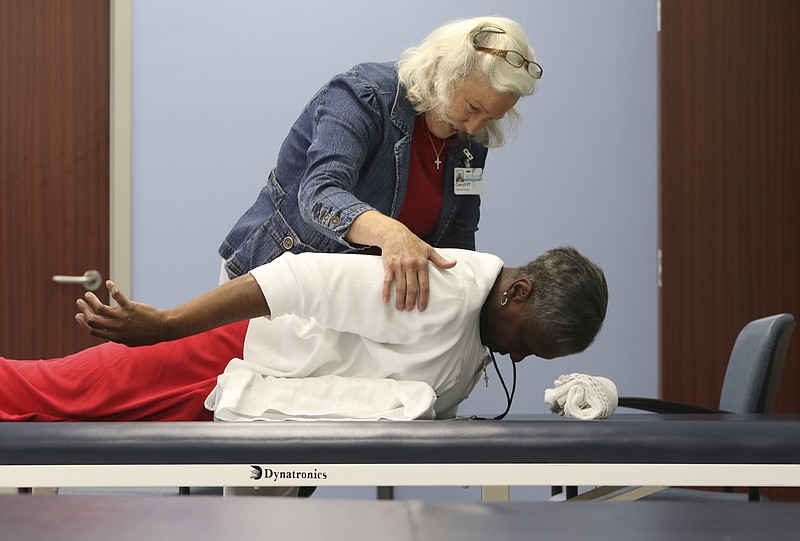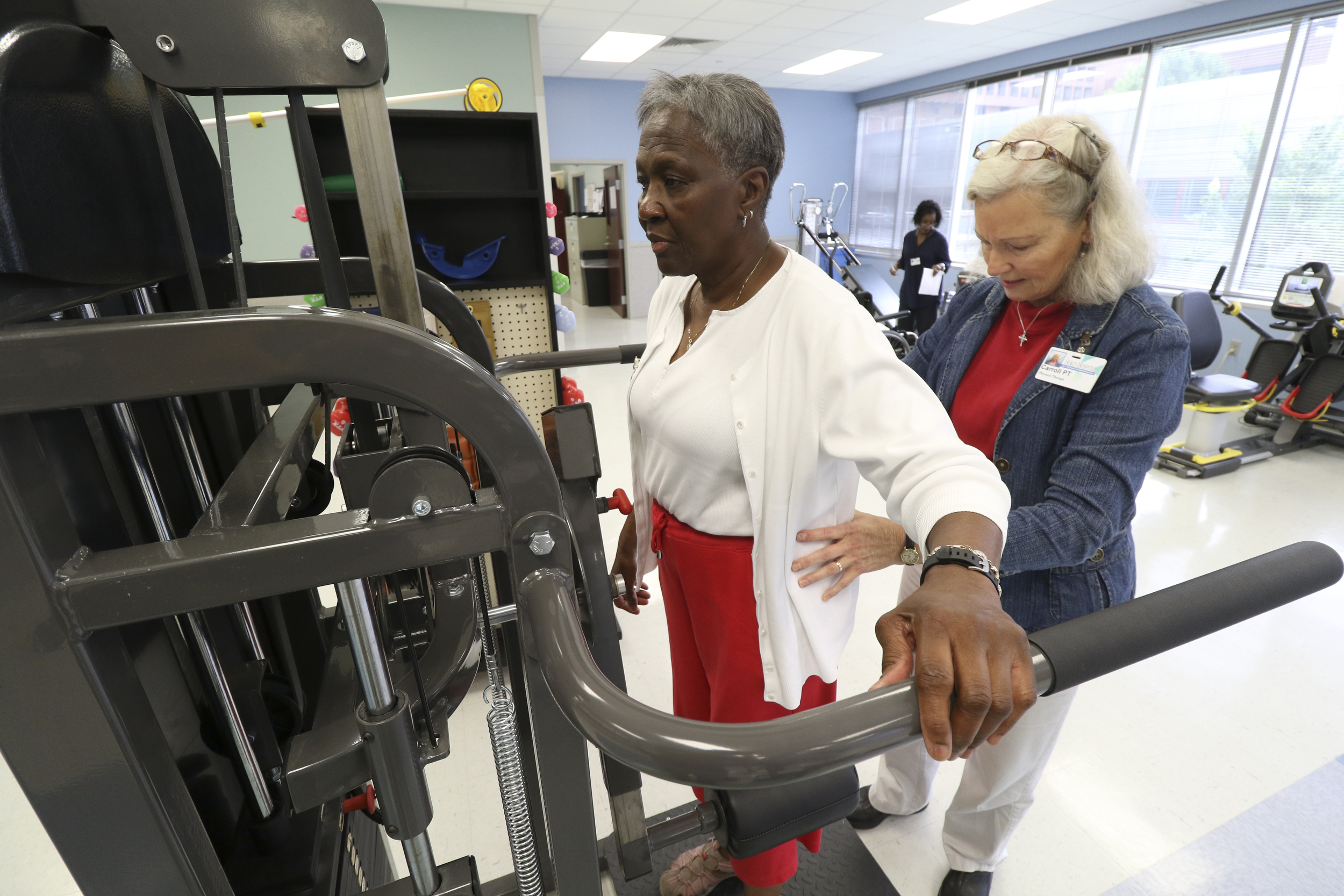Osteoporosis
Osteoporosis causes bones to become weak and brittle — so brittle that a fall or even mild stresses such as bending over or coughing can cause a fracture. Osteoporosis-related fractures most commonly occur in the hip, wrist or spine.CausesYour bones are in a constant state of renewal — new bone is made and old bone is broken down. When you’re young, your body makes new bone faster than it breaks down old bone and your bone mass increases. Most people reach their peak bone mass by their early 20s. As people age, bone mass is lost faster than it’s created.How likely you are to develop osteoporosis depends partly on how much bone mass you attained in your youth. The higher your peak bone mass, the more bone you have “in the bank” and the less likely you are to develop osteoporosis as you age.SymptomsThere typically are no symptoms in the early stages of bone loss. But once your bones have been weakened by osteoporosis, you may have signs and symptoms that include:› Back pain, caused by a fractured or collapsed vertebra› Loss of height over time› A stooped posture› A bone fracture that occurs much more easily than expectedWhen to see a doctorYou may want to talk to your doctor about osteoporosis if you went through early menopause or took corticosteroids for several months at a time, or if either of your parents had hip fractures.Source: Mayo Clinic
Thelma Webster is one of the lucky ones.
She was in a car wreck, and as part of her examination, her doctor insisted she get a bone density test.
What the test discovered was that Webster had osteoporosis, the disease doctors sometimes refer to as the "silent killer."
"It doesn't hurt or anything," Webster said Tuesday at Siskin Hospital for Physical Rehabilitation.
Osteoporosis is silent because there are no early symptoms. It saps bones of their strength over a span of years, and often the first time patients are aware they have it is after they break a hip or fracture an arm and realize their bones are abnormally fragile.
Webster was fortunate because she was tested for osteoporosis early. Now she takes vitamins and exercises to strengthen her muscles and bones.
But for far too many people, particularly older women, it is a devastating disease.
A new AARP study released in July says most women are not screened for the disease and don't get the treatment they need to prevent it.
Women are at least three times more likely to have hip fractures than men.
"Men have a higher bone mineral density to start with, and may be more physically active," said Dr. David Bowers, medical director at Siskin.
One in two women will be diagnosed with osteoporosis and one in four men, according to physical therapist Carroll Allen, who was helping Webster exercise at Siskin on Tuesday.
"Osteoporosis has become rampant because life expectancy has gone up," Allen said.
When women in their 80s break a hip, 20 percent die within a year and more than 40 percent are unable to regain their previous mobility, according to the International Osteoporosis Foundation.
"This older population is frail, and they don't seem to recover very well," Bowers said. "They have a low muscle mass, so they are in bed a lot and can have blood clots, or pulmonary embolism. They just have limited motion, so they may get pneumonia when they get bed ridden."
That often means they must give up independent living or move into a nursing home.
"Their home may not be handicapped accessible, so bathing, even getting in and out of bed, all those sorts of things become very problematic," he said, "and they end up in a nursing home."
A nursing home stay can be financially disastrous. While Medicare pays 100 percent of the bill for the first 20 days and most of it for the next 80 days, after that, the patient must pay from private funds, and nursing homes are expensive. According to a survey by Genworth, the average monthly cost in 2016 of a semi-private room in a nursing home in Tennessee was $5,779.
"My grandmother fell and fractured her hip, and then she fell and fractured an arm, and then she fractured her other hip," Bowers said. "Her $50,000 in savings were gone in a year, and she was on Medicaid."
Yet despite that bleak forecast, no more than one in five women at risk are tested for osteoporosis, and many of those who fracture a hip do not get the followup treatment they need, according to the study. Perhaps most surprising, the study, which used data from claims filed with a major health insurance carrier, found that most women who suffered from a broken hip did not get tested for osteoporosis even after the injury.
Only 13 percent received a bone density test and 7 percent began using osteoporosis drug therapy, according to the study, and just 23 percent had been tested or treated for osteoporosis within the year following their hip fracture.
Bowers said osteoporosis is often not a top priority for many primary care doctors.
"Family doctors have limited time, and they deal with one or two problems that they know about - heart disease, or pain from arthritis, or diabetes," he said. "You can't cover everything in a 15-minute visit. So the things that are not shouting out are ignored."
He recommends a bone density test every two years for women who are past menopause. "The test is not hard, it doesn't take long, and it doesn't involve any radiation," he said.
Allen, who has been a physical therapist for 37 years, stresses the importance of exercise - at any age.
"Exercise reduces the progression of the disease, and reduces the risks of a fall, and it increases balance, and muscle strength," she said. "Even into your 90s, some strength can be restored to improve balance and function."
She also recommends common sense measures to avoid falls - adding grab bars to toilets and showers, getting rid of slippery throw rugs or exposed extension cords, and keeping lights bright.
"As we get older, we rely more on vision for balance," she said.
Allen also suggests that family members insist that older relatives wear a medical alert necklace so if they do fall, they can summon help.
"Even if there is a fall or fracture, they can reduce the risk of a loss of consciousness from lying in the floor, or prevent hypothermia," she said.
But better to diagnose the disease early, Bowers said, before it results in a broken hip or arm.
"We have multiple medicines that are proven to reverse osteoporosis and can make a significant difference in bone mineral density," he said. "We really can treat this."
"But obviously," he said, "it is better to do it sooner."
Contact staff writer Steve Johnson at 423-757-6673, sjohnson@timesfreepress.com, on Twitter @stevejohnsonTFP, or on Facebook, www.facebook.com/noogahealth.

